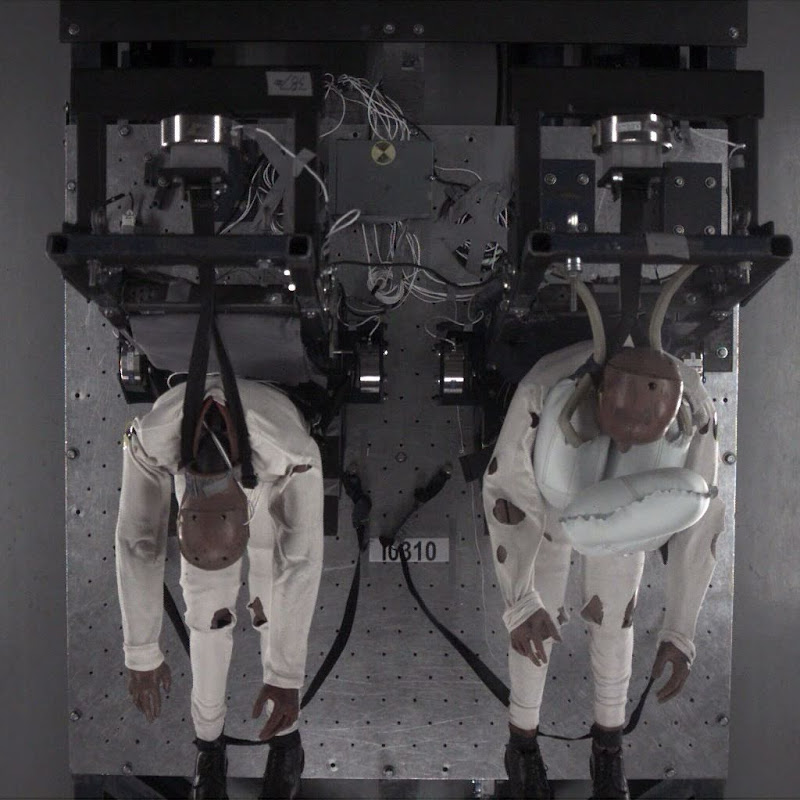Jman
Site Developer
Recently the OH-58Ds I fly have been retrofitted with Cockpit Airbag systems. Here is a link to a description of the system. http://www.baesystems.com/BAEProd/gr...ps_oc_cabs.pdf
There was an interesting post on Vansairforce.net about the Seatbelt Airbag system from Amsafe. It's quoted below. The photo is pretty darn compelling. What do you guys think about Airbags in the cockpit? Good thing or bad? The reason I ask is that I was very surprised by the amount of negative feelings in the afore mentioned thread about airbags in airplanes.
There was an interesting post on Vansairforce.net about the Seatbelt Airbag system from Amsafe. It's quoted below. The photo is pretty darn compelling. What do you guys think about Airbags in the cockpit? Good thing or bad? The reason I ask is that I was very surprised by the amount of negative feelings in the afore mentioned thread about airbags in airplanes.
I have spent the last two years working closely with AmSafe to develop an airbag system for Air Tractor agricultural aircraft. At first, I was a little skeptical about whether airbags were needed in our aircraft. We already have designed our aircraft with remarkable crashworthiness, including a steel "roll cage" around the cockpit.
In the past two years, we have run over 12 full scale crash tests on a test sled. These crash tests were conducted at up to 26 G's, which is the maximum definition of a "survivable crash". Our development also included several safety analyses and analysis of actual crash data. My opinions of the need for airbags has been totally changed. We recently unveiled our airbag system at a convention in December and received an overwhelmingly positive response. In our testing, we determined that these airbags reduced the severity of head and neck trauma by over 95%!!!
First of all, it is important to understand that these aviation airbags are completely different that car airbags. Besides the fundamental technology involved, there are no similarities in the way the systems operate. For example, car airbags deploy toward the driver at near supersonic speeds. This alone can cause injury as described in a couple of the previous posts. However, aircraft airbags deploy AWAY from the pilot and simply fill the space between the pilot and the instrument panel. Also, the airbags are specifically designed so that when they deploy, they will not interfere with the aircraft controls or the pilots arms.
Also, the airbags are fully inflated in approximately 35 milliseconds and then deflate in less than a second. According to google, the blink of an eye takes 350 milliseconds!! Everybody worries about "inadvertant deployments" or the bags going off on accident. We did testing and analysis to prove to the FAA that the risk of inadvertant deployments was less than once for every 51 million flight hours!
Quote:
Also, the risk of the airbag not deploying when it was supposed to was determined to be less than once for every 6.4 million flight hours.
Those belts have been standard equipment in Cirrus aircraft for about 3 years. At least one accident (in the European Alps) the pilot credits those belts for saving serious injury or worse for himself and his passenger.
http://s480.photobucket.com/albums/r...nAlpsSmall.jpg
Personally looking at the picture I think he is overstating their case, but that's his story, FWIW. To each there own.
If you read the accident report on this accident, you will see that this aircraft only had one operational airbag system, for the pilot seat only. The pilot walked away from the accident with a broken vertebra. The co-pilot however had a broken vertebra, severe facial injuries, and brain trauma. As was mentioned earlier, the airbags are a supplemental safety device that reduces the severity of head and upper torso injuries.
Do what you like with this info, but it has been an eye-opening experience for me.
-----------------
Here is an interesting picture from our testing. This is a 26 G test. On the left is an occupant wearing our standard aircraft seat belt and shoulder harnesses. On the right is exactly the same except that the airbags have been installed on top of the stock restraints.
You never realize how much the belts stretch until you see them under the high speed camera.

Notice how the airbags cradle the occupant's head and keep it from traveling forward or side to side. The airbags also keep the occupant's head and spine inline for better protection against damage from forward and even vertical loads.
__________________
Kyle Schroeder
RV-7
Empennage Kit - Wrapping up loose ends
Wing Kit - Inventoried and ready to go



